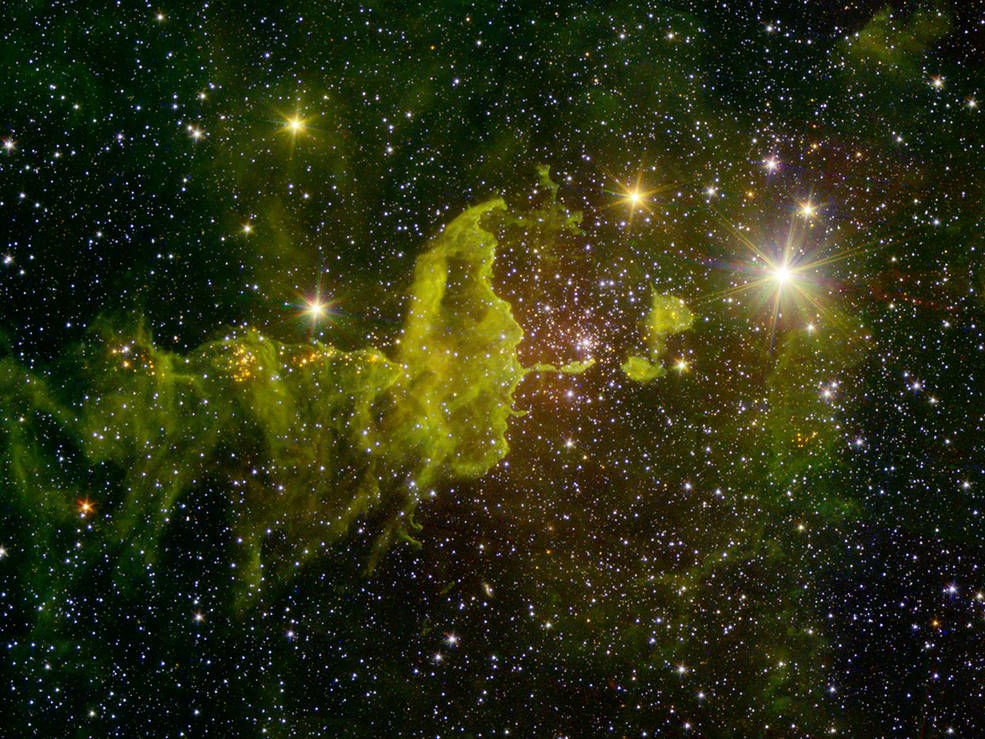
An enormous space "spider," glowing a strange and radioactive shade of green, stretches its many legs across the cosmos.
But breathe easy, arachnophobes; it's just a photo, and a pretty one at that. The image, which NASA released Thursday (April 14), shows the Spider Nebula, a giant cloud of gas and dust that lies about 10,000 light-years from Earth, in the constellation Auriga.
And the spider isn't really green; the photo was created using infrared data gathered by NASA's Spitzer Space Telescope and the Two Micron All-Sky Survey (2MASS). [Gallery: Strange Nebula Shapes - What Do YOU See?]
"In the image, infrared wavelengths, which are invisible to the unaided eye, have been assigned visible colors," NASA officials wrote in an image description. "Light with a wavelength of 1.2 microns, detected by 2MASS, is shown in blue. The Spitzer wavelengths of 3.6 and 4.5 microns are green and red, respectively."
Nebulae such as the Spider (which is officially known as IC 417) often serve as stellar nurseries, and there are indeed a number of young stars visible in the photo.
"Toward the right of center, against the black background of space, you can see a bright group of stars called 'Stock 8,'" NASA officials wrote. "The light from this cluster carves out a bowl in the nearby dust clouds, seen in the image as green fluff. Along the sinuous tail in the center, and to the left, the groupings of red point sources clumped in the green are also young stars."
2MASS was a survey that scanned the heavens between 1997 and 2001 using telescopes in Arizona and Chile (thus providing coverage of the skies in both the Northern and Southern hemispheres).
Sign up for the Live Science daily newsletter now
Get the world’s most fascinating discoveries delivered straight to your inbox.
The Spitzer Space Telescope launched in August 2003, kicking off a 2.5-year prime mission. The observatory ran out of helium coolant in 2009, rendering most of its instruments unusable. But Spitzer continues to operate to this day, as part of a more limited "warm" mission.
Follow Mike Wall on Twitter @michaeldwall and Google+. Follow us @Spacedotcom, Facebook or Google+. Originally published on Space.com.











